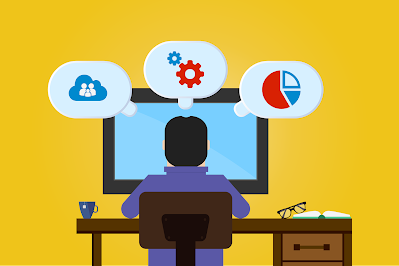Need for BI Tool when Excel exists
Firstly, I would like to clarify that BI tools are not only BI reporting tools. Unfortunately the BI software vendors market their BI reporting tool (which is one part of the BI solution) as the BI solution. A BI reporting tool mainly provides reporting, analysis, visualization and portal capabilities along with several other smaller features. But this is not always the BI solution.
Yes, you can just use a BI reporting tool on top of a transactional database and say that you have a BI solution. But this solution will lack data historization/versioning. So, some of the strategic questions cannot be answered by this kind of BI solution as point in time data is missing. Only the operational and tactical BI needs are met. If this is good enough for the business then it's fine. However this is not always enough, This is why usually BI solution includes a data warehouse and to load this data warehouse there is usually ETL (script or Tool). Its not easy and not small effort to setup a good data warehouse so people tend to skip this part. So BI tools in the correct sense will also include ETL tools, data warehouse (DB’s) and BI reporting rools.
No, not all tasks, only some can be done. If all tasks were possible in an Excel the BI reporting tools market excluding excel wouldn’t exist. Excel can obviously do some tasks that no BI reporting tool probably can do as of now but that is not the topic here.
Some of the features (not necessarily all of the main ones) are listed below, there are too many features to list all of them.
Metadata driven reporting: A semantic layer is created such that business users are able to drag and drop objects (dimensions/attributes, metrics/measures, filters, prompts, derived columns) and create meaningful reports on their own. This ensures different users when they try to create same report get the same result. The tables (in DB’s) are correctly joined and relationships are established only once.
Data security implemented with ease in BI reporting tools - Row level and column (Same report used by different people, some get to see all the rows, some users get to see only some rows, some get to see all the columns and some users only few of the columns)
Metadata, History and Statistics repositories - BI reporting tools captures every action, which reports are used? How many times? How long did each report refresh take? Which users are active? How many reports were scheduled and many such activities are captured and out-of-the-box reports are provided by BI Reporting tools to view the results.
User, Groups, Roles and Folder Management
LDAP Authentication and SSO
Cubes (Multidimensional) and Report caches
Reporting Portal and Scheduling capabilities
Connectors to almost all of the Data sources
Pixel perfect reporting
Web based access
No programming/coding skills required - A BI reporting tool developer need not program/code. He can use the GUI and carry out almost all of the tasks like adding a prompt, creating filter, creating relationships between tables.
Auditing - Every change in every object can be captured. Who changed the report or column definition? etc.
Collaboration - Share reports via the portal, share notes



Comments
Post a Comment
Thanks for your comment. It will be posted after checks.